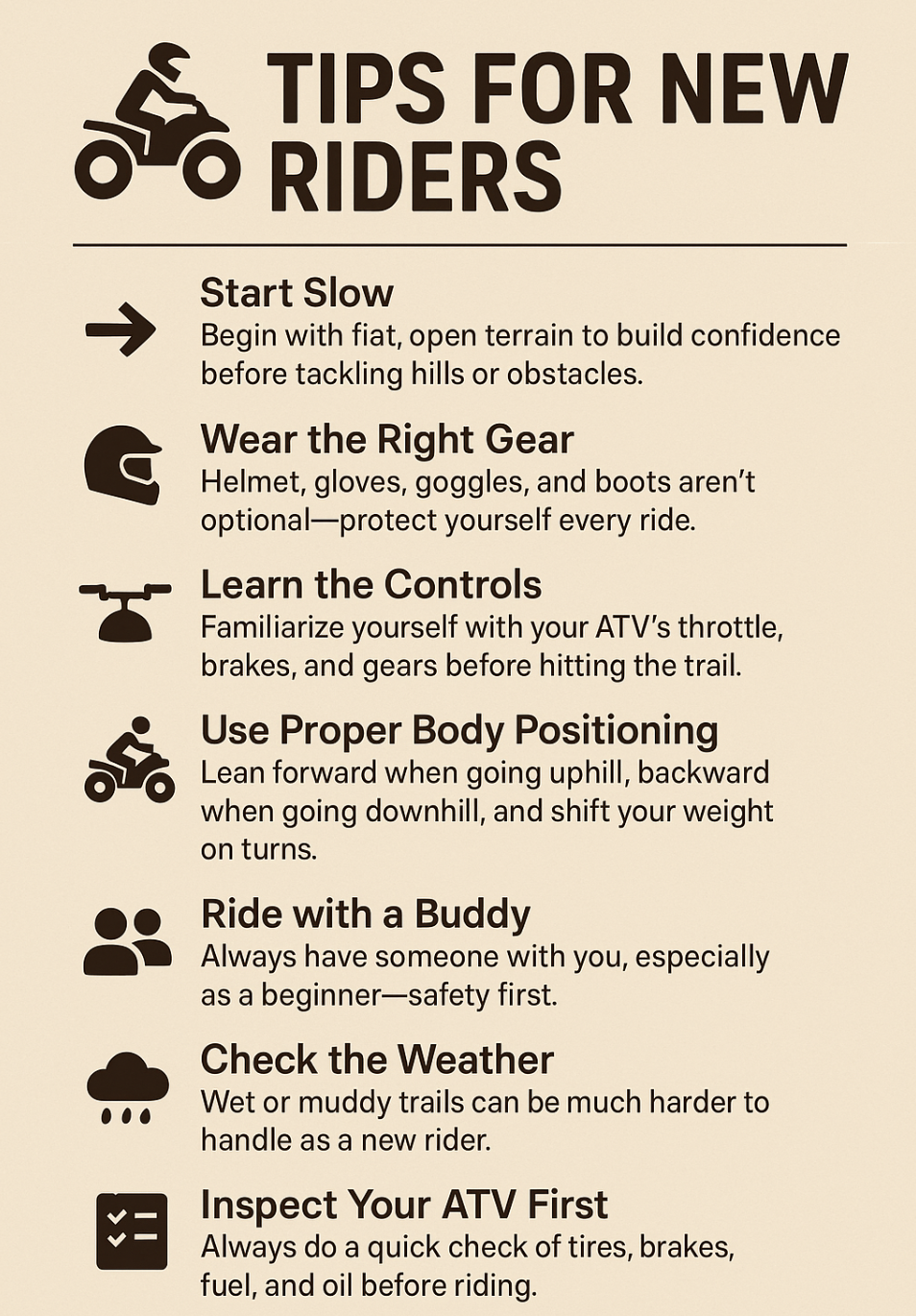ATV Riding Basics
Getting Started with ATV Riding
All-terrain vehicles (ATVs) are a fun and practical way to explore your land, hit local trails, or enjoy the outdoors with friends and family. Whether you’re riding for recreation or using your ATV for land management, learning the basics will help you stay safe, protect your machine, and get the most out of every ride.
Key Tips for ATV Beginners
Always wear proper safety gear, including a helmet
Learn basic riding techniques before hitting challenging terrain
Start slow and build confidence with flat, open areas
Keep up with regular ATV maintenance
Understand local regulations for public and private land use
Ride with others, especially as a beginner
What You’ll Need to Ride Safely
Helmet and Protective Gear
A DOT-approved helmet is essential. You should also wear gloves, boots, long pants, and a long-sleeved shirt or jacket to protect from debris and sun exposure.
Vehicle Registration (If Required)
If you’re riding on public land or trails in Utah, you’ll likely need to register your ATV and display the proper tags. Private land use generally doesn’t require this, but it’s good to check.
ATV Size and Fit
Choose an ATV that matches your skill level and body size. Kids and adults have different safety requirements, and handling will vary depending on engine size.
Terrain Basics: Where to Ride Your ATV
On Private Land
If you own land in rural Utah, you can ride without restrictions as long as you’re staying within your property lines. Many landowners use ATVs for recreation, trail clearing, or hauling materials.
On Public Trails
Utah has hundreds of miles of designated ATV trails. Always stay on marked routes, respect seasonal closures, and know the rules for your specific riding area.
In the Mountains or Desert
Changing terrain means adjusting your speed and riding style. Watch for loose sand, steep slopes, or rocky areas that could require more advanced handling.
Basic Riding Techniques
Mounting and Dismounting
Always mount from the left side and keep both feet on the footrests. Dismount only after the ATV has come to a full stop and is in neutral or park.
Turning and Leaning
Use body weight to help shift during turns, especially on slopes. Slow down before turning, and avoid overcorrecting.
Braking
Use both front and rear brakes together for balanced stopping. Practice gentle braking to avoid skidding, especially on loose dirt or gravel.
Climbing and Descending Hills
Approach hills straight-on, not at an angle. Lean forward while going uphill and shift your weight backward while going downhill to maintain balance.
Tips for New Riders
Start on flat ground or open trails before attempting steeper terrain
Ride during the day with good visibility
Let someone know where you're riding if you go alone
Carry a basic repair kit and first aid supplies
Take breaks to avoid fatigue
ATV Riding on Your Own Land
If you own property in Utah, riding ATVs becomes easier and more accessible. You can build trails, ride at your own pace, and teach friends or family without worrying about crowded trailheads. Many of our buyers purchase land specifically for outdoor hobbies like ATV riding and camping. With minimal restrictions in rural zones, it’s the perfect way to turn your property into a private adventure zone.
Final Thoughts
ATV riding is a great way to explore the outdoors, manage your land, or just enjoy a day of fun. With the right gear, some practice, and a focus on safety, you’ll quickly gain confidence and start riding like a pro. Whether you’re planning to ride on your own land or out on Utah’s trail systems, knowing the basics is the best place to start.
Let me know if you’d like a blog cover or graphic for ATV gear or trail tips!




